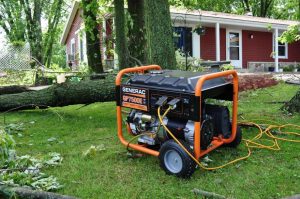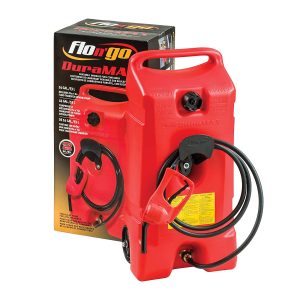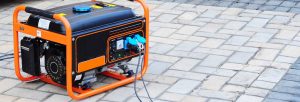We have entered hurricane season and the peak of these storms is coming up. On a worldwide scale, May is the least active month, while September is the most active for hurricanes. In the Northern Atlantic Ocean, a distinct hurricane season occurs from June 1 to November 30, sharply peaking from late August through September; the season’s climatological peak of activity occurs around September 10 each season.
Hurricanes and Tropical Storms can put out incredibly high winds and large amounts of rainfall. Many homes, especially those who live in a hurricane path try to prepare there residents before these storms hit. And one thing they sometimes get is a back up generator. These are great for keeping the lights on, the fridge cold, and to the toilet flushing until the lights come back on.
While backup generators can come in handy in a pinch, owners should know the right way to install and maintain them. Knowing what to do can help reduce risks like fire, electrical damage, injuries and more. Here are some very important things to do now if you have (or will soon have) a backup generator.
Never run your generator indoors.
 Think of your generator as a car. You would never turn your car on in an enclosed garage because of the levels of carbon monoxide that it puts off. This rule is the same for your generator. You should always place your generator at least 20 feet from your home with the engine exhaust facing away from your home or windows.
Think of your generator as a car. You would never turn your car on in an enclosed garage because of the levels of carbon monoxide that it puts off. This rule is the same for your generator. You should always place your generator at least 20 feet from your home with the engine exhaust facing away from your home or windows.
If you’re using a generator to keep the lights on during a cleanup effort, use a working, battery-operated carbon monoxide detector at the same time. A carbon monoxide alarm provides one more layer of defense against making an innocent but potentially deadly mistake.
Never run your generator in the rain.
But what about during a hurricane? Thats why you have one. Yes this is true you did buy it for times like this but remember that even though the electricity is out there is still electric currents running threw your machine. You can buy tents for generators that keep them shielded but well-ventilated online and at home centers and hardware stores.
Refueling your generator.
Like most machines when the are running for a long period of time they tend to get incredibly hot. Just pause for a second and touch your phone charger that has been plugged into the wall for a couple of hours. I bet its pretty hot. Now think about a large scale machine that has been running for a couple of hours, its definitely hot. If your generator uses gasoline please make sure you have turned it off and let it cool completely before refueling. Gasoline spilled on hot engine parts can ignite causing large damaging fires.
Stocking up on gasoline and storing it properly.
 If you think you will be using your generator for a long amount of time be sure to stock up on fuel. When storing gasoline in your home only store in an ANSI-approved container in a cool, well-ventilated place. There are stabilizers you can add to your gasoline as well to help it last longer as well. Never place your containers near any potential fire or heat hazard and never store it inside your home.
If you think you will be using your generator for a long amount of time be sure to stock up on fuel. When storing gasoline in your home only store in an ANSI-approved container in a cool, well-ventilated place. There are stabilizers you can add to your gasoline as well to help it last longer as well. Never place your containers near any potential fire or heat hazard and never store it inside your home.
Avoid electrical hazards.
 Consumer Reports states; “If you don’t yet have a transfer switch, you can use the outlets on the generator—providing you follow certain precautions. It’s best to plug in appliances directly to the generator. If you must use an extension cord, it should be a heavy-duty one for outdoor use, rated (in watts or amps) at least equal to the sum of the connected appliance loads. First check that the entire cord is free of cuts and that the plug has all three prongs, critical to protect against a shock if water has collected inside the equipment.”
Consumer Reports states; “If you don’t yet have a transfer switch, you can use the outlets on the generator—providing you follow certain precautions. It’s best to plug in appliances directly to the generator. If you must use an extension cord, it should be a heavy-duty one for outdoor use, rated (in watts or amps) at least equal to the sum of the connected appliance loads. First check that the entire cord is free of cuts and that the plug has all three prongs, critical to protect against a shock if water has collected inside the equipment.”
Install a transfer switch before you next storm.
If you can call your electrician and have them install a transfer switch. These can run anywhere between $400-$1000 depending on your electrician. What a transfer switch allows you to do is connect your generator to your home circuit panel. This will let your generator connect to all your hardwired appliances so you don’t need the use of big bulky extension cords.
Don’t backfeed!
Back feeding is when you attempt to plug in your generator to a wall outlet in your house. This can be extremely dangerous because it can bypass your some of the built-in household circuit protection devices, so you could end up frying some of your electronics or starting an electrical fire.
